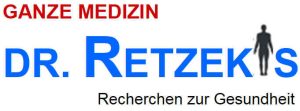Shock, fright, fear, etc. trigger overactivity in the brain stem. This leads to a lot of tw. most severe symptoms which we call Post-Traumatic Stress Syndrome PTSD.
Petros Kattou – the neuromodulator from Cyprus – taught us about the disease as well as the background and, above all, how to successfully treat it.
In his cases we see a disappearance of the symptoms in 1-2 months, the key is to treat the brain stem and only then to treat the cerebrum using tDCS.
Super exciting case from Cyprus
the patient owns a thriving construction company and gravel pit. His brother was run over by an excavator and died. Since then, the patient has changed extremely, screams and argues very loudly in his sleep, becomes irritable and angry at work over small things, can no longer concentrate, and sleeps very badly
He was everywhere
Top psychiatric hospitals
Top neurologist
Pulmonologist –> Apnea device without success
then also bioresonance, homeopathy, hypnosis the best in Great Britain _ _
Treated only with SOZo neuromodulation methods, completely recovered in a very short time.
Talking and arguing in your sleep
Neurological symptoms from brainstem irritation before/after
(I only show part of the complaints, this is NDA patented by Petros)
Petros writes about it
Heli, you are very welcome to publish the case
First of all, I would like to thank the patient’s brother 👨 Andreas for referring me this unique severe case of PTSD. The test uncovers and challenges all reptiles’ adaptive evolutionary reflexes (fight, flight, fidgeting, freezing). The patient examined suffered from extreme post-traumatic stress disorder, sleep 😴 🛌 speech, sleep 💤 paralysis, severe mental mood swings, loss of interest, reticular activation for work, and extreme anger 😡 while communicating.
The SOZΩ Brain 🧠 Center uses the most effective evidence-based medically regulated MDR/MDA device in Europe and uses Petros Kattou’s patented screening method.
He has consulted several specialists without obtaining positive results. I would like to ❤ thank Mr. George and his lovely wife for sharing this case for educational purposes. Amen 🙏.
another case: Dystonia because of PTSD
I have already written about a case of DYSTONIA – which was actually also a PTSD shown here in the following blogpost. This patients treatment I watched while getting training in Cyprus
In Vienna 2023 we had another case of PTSD
Justice officer who was attacked by inmates and had not been able to work for 2 years and was becoming more and more disturbed. After 6 weeks, he sent us a great testimonial video internally and thanked us for the successful treatment – patient of Dr. Vera Skarja, SOZO doctor in BLEIBERG.
current research results on PTSD
Post-traumatic stress disorder (PTSD) in the neurological sense refers to the structural and functional changes in the brain that can occur after traumatic experiences. Studies have shown that PTSD is associated with changes in various brain regions, including the amygdala, hippocampus, and prefrontal cortex. These changes may contribute to the symptoms of PTSD, including increased anxiety, hyperarousal, and difficulty processing traumatic memories.
– **Amygdala**: Responsible for processing emotions. PTSD patients often become overactive, leading to increased anxiety and emotional reactivity.
– **Hippocampus**: Plays a role in memory storage and retrieval. A reduction in hippocampal volume can be observed in PTSD, which may explain difficulties in distinguishing between past and present.
– **Prefrontal Cortex**: Important for executive function and emotion regulation. Changes in this region can lead to difficulties in inhibiting fear responses and processing traumatic memories.
Research suggests that PTSD is also associated with changes in neurotransmitter activity, including serotonin and norepinephrine, as well as dysregulation of the hypothalamic-pituitary-adrenal axis, resulting in an altered stress hormone profile.
Recent studies are using imaging techniques such as fMRI (functional magnetic resonance imaging) and PET (positron emission tomography) to investigate the neurological basis of PTSD and to develop targeted treatment approaches.
Credentials:
– Pitman, R.K., Rasmusson, A.M., Koenen, K.C., Shin, L.M., Orr, S.P., Gilbertson, M.W., … &Liberzon, I. (2012). Biological studies of post-traumatic stress disorder. Nature Reviews Neuroscience, 13(11), 769-787.
– Shin, L.M., & Liberzon, I. (2010). The neurocircuitry of fear, stress, and anxiety disorders. Neuropsychopharmacology, 35(1), 169-191.
These studies provide a deeper insight into the neurological aspects of PTSD and highlight the importance of a multidisciplinary approach to understanding and treating this condition.


